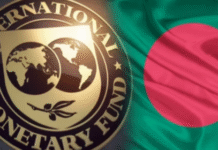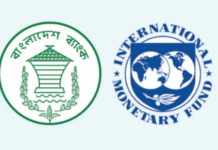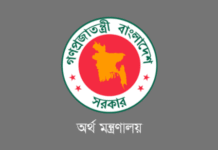Tanners are offering merchants low prices for rawhides under the excuse of having borne high investment for machinery at the newly constructed Savar leather estate, running operations there on a limited scale, of having unsold stocks and falling international prices of leather goods.
The business cycle mainly centres around the Eid-ul-Azha sacrifices when over 50 percent of the annual sourcing occurs, with rawhides changing hands from seasonal retailers to merchants to tannery owners.
Tannery owners have started buying the rawhides, which merchants cure with salt, from the major markets such as those in Posta and Amin Bazar in Dhaka, Razarhaat in Jessore, Palashpur in Thakurgaon, Natore sadar market, Shambuganj in Mymensingh and Rangpur.
“The tanners are offering us low prices,” said Mohammad Ali, a trader at Posta, the country’s largest rawhide market.
Merchants on an average paid retailers between Tk 1,400 and Tk 1,500 for each rawhide and afterwards spent Tk 300 to Tk 350 behind the salt, labour, transport and warehouse rent, Ali said.
However, tanners are now offering between Tk 1,800 and Tk 2,000 for each rawhide, he said.
The merchants have no option but to give in as the tanners act in unison, he added.
Ali Hossain, former chairman of Bangladesh Hide and Skin Merchant Association, also stated that the prices were relatively lower this year and that tanners were reasoning the same.
The tanners are paying Tk 80 per square feet of premium quality rawhide and between Tk 50 and Tk 60 per square feet for those of lower grades. Rawhide quality falls for reasons such as delayed and inadequate application of salt, poor transportation and inefficient skinning.
This year there is a possibility of 20 percent of rawhides depreciating in quality for the application of inadequate salt, said Shaheen Ahamed, president of Bangladesh Tanners Association.
Every 75-kilogramme bag of salt sold between Tk 1,400 and Tk 1,500 centring Eid whereas it was between Tk 800 and Tk 900 even two to three months ago. Tanners say the quality of rawhides from Dhaka and the country’s northern districts were usually good and those from Barisal, Chittagong and Noakhali were of a lower grade due to attacks by insects.
“We have already sent our representatives to different markets of the country to buy rawhides from merchants. We will continue purchasing rawhides for the next two to three months,” Ahamed said.
Ali Hossain said this year over one crore pieces of rawhide would be processed into leather, including that of nearly 55 lakh cows, 40 lakh goats and 10 lakh buffaloes and sheep. Tanners have already invested nearly Tk 5,000 crore to set up new factories at the Savar leather estate and this had a negative impact on rawhide sales, he said.
The industries ministry claimed that 80 tanneries started operations at the Savar leather estate although industry insiders said the figure was hardly 40 till date.
That so many tanneries have halted operations or are running on a limited capacity also had a negative impact on the rawhide market, Hossain said.
He claimed that retailers bought rawhides at prices higher than the government fixed rates of Tk 50-55 per square feet.
Moin Uddin, deputy manager of the Savar leather estate, claimed that 85 tanneries had started operations and the number would cross 100 within next month as construction works were going on in full swing.
On the other hand, people who sacrificed animals say rawhide prices dropped over 30 percent compared to that following the previous Eid.
They said a medium sized rawhide of a cow sold between Tk 600 and Tk 800 this Eid but it sold between Tk 1,200 and Tk 1,300 last year. The number of rawhide laden trucks arriving every day at the Savar leather estate is increasing.
This Eid, the price per square feet of cow rawhide was fixed at Tk 50-55 in Dhaka and Tk 40-45 outside. For that of he-goat, it was Tk 40-45 and for she-goat Tk 15-17.
Leather and leather goods are the second highest export earning sector after apparel. It raked in $1.23 billion last fiscal year, up 6.29 percent year-on-year, according to data from Bangladesh Export Promotion Bureau.
Source: The Daily Star









